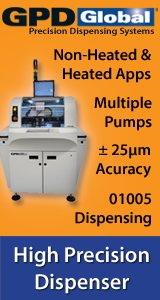Printed Circuit Board Assembly & PCB Design Forum
SMT electronics assembly manufacturing forum.
- SMTnet
- »
- Electronics Forum
- »
- Release difficult from thick stencil
Release difficult from thick stencil
![]() Our important customer demanded us to use 12mil thick stenc...
- Oct 24, 2000
by
Wister
Our important customer demanded us to use 12mil thick stenc...
- Oct 24, 2000
by
Wister
![]()
![]()
![]() Maybe someone has a good explanation for this, but I'm wond...
- Oct 24, 2000
by
Steve Thomas
Maybe someone has a good explanation for this, but I'm wond...
- Oct 24, 2000
by
Steve Thomas
![]()
![]()
![]() I meant aperture width and stencil thickness, not land widt...
- Oct 24, 2000
by
Steve Thomas
I meant aperture width and stencil thickness, not land widt...
- Oct 24, 2000
by
Steve Thomas
![]()
![]()
![]() Sorry,I can't help you with your problem, but would it be p...
- Oct 24, 2000
by
Frank
Sorry,I can't help you with your problem, but would it be p...
- Oct 24, 2000
by
Frank
![]()
![]()
![]() In response to your questions:
* Will a polyurethane squee...
- Oct 24, 2000
by
davef
In response to your questions:
* Will a polyurethane squee...
- Oct 24, 2000
by
davef
![]()
![]()
![]() Wister,
I agree with the other comments as far as challeng...
- Oct 27, 2000
by
Wister,
I agree with the other comments as far as challeng...
- Oct 27, 2000
by
![]()
![]() Is it possible you could simply over print to achieve the s...
- Nov 01, 2000
by
Is it possible you could simply over print to achieve the s...
- Nov 01, 2000
by
![]()
![]() Steve,
someone somewhere is feeding you a line!! if you inc...
- Nov 01, 2000
by
Steve,
someone somewhere is feeding you a line!! if you inc...
- Nov 01, 2000
by
Wister
- SMTnet
- »
- Electronics Forum
- »
- Release difficult from thick stencil







